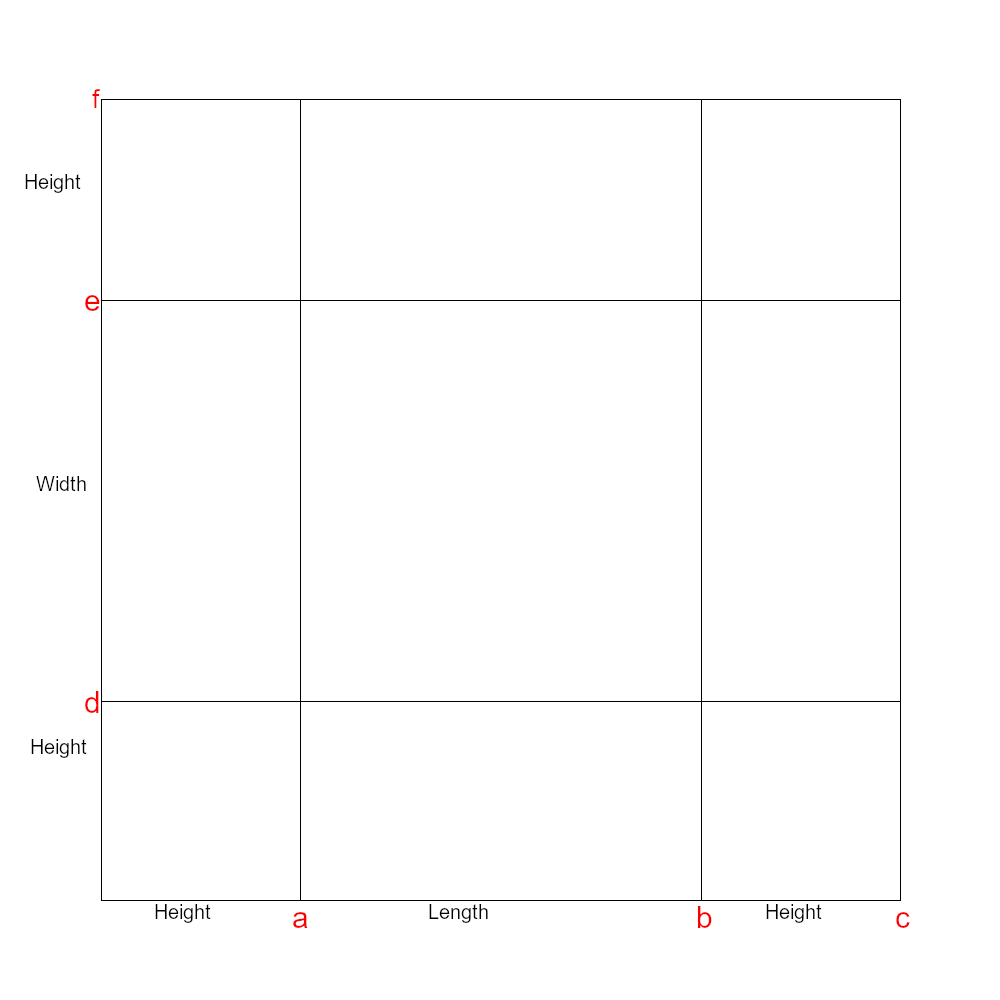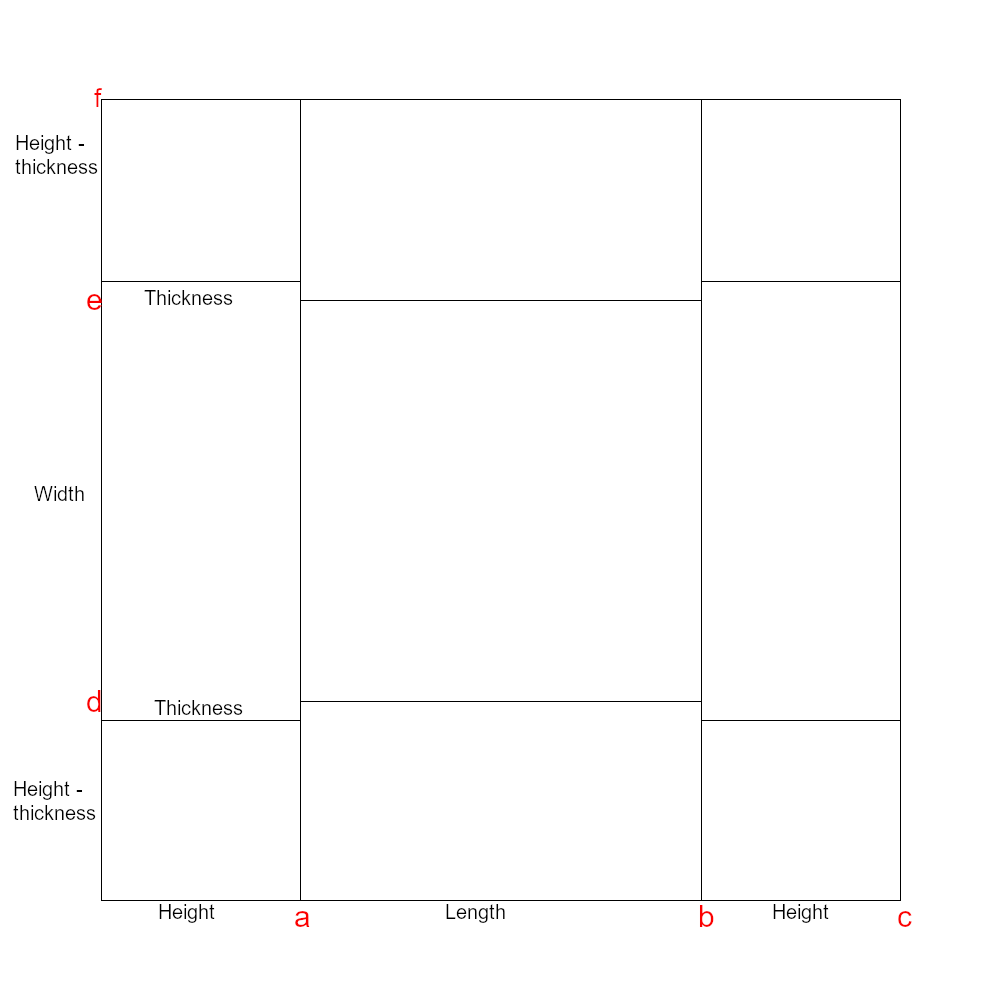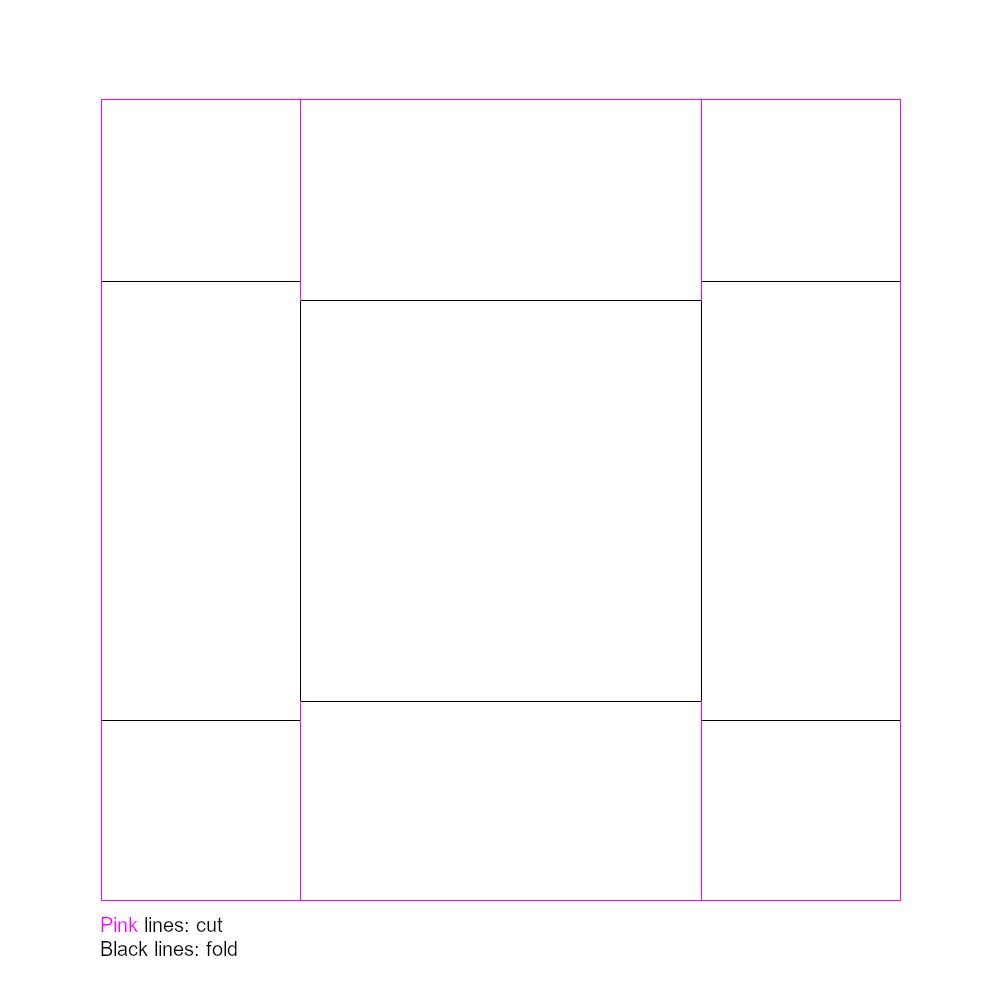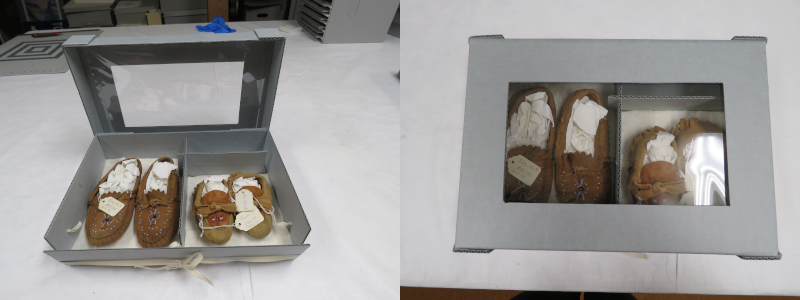Precision rating: low
Materials needed:
- Flat sheet(s) of blueboard. For large boxes, you may need 1 sheet for the box and 1 sheet for its lid
- Ruler
- Pencil
- Eraser
- Bone folder
- Box cutter
- Cutting mat
- Strong, archivally rated adhesive
- Clamps to hold the box in shape as the adhesive dries
Box base
Preparation
- Measure object(s) to be housed. Capture length, width, and height.
- Decide how much extra wiggle room you want in the box for padding, ease of retrieval, etc. Add that to your measurements.
Drafting the pattern
This pattern starts at the bottom left corner of the piece of blueboard
|

|
This pattern is drawn so that the corners adhere to the outside of the box. As a result, the corner flaps will be adjusted slightly to account for the thickness of the blueboard.
|

|
Creating the box
|

|
Lid
Making the lid is identical to making the box base. The only difference will be the measurements: your lid will be slightly longer and wider than the box base, so that it fits on top, and the sides will (usually) be shorter than the full height of the box base. Use these tips to measure needed box lid dimensions, then follow the steps for making the box base using your new dimensions.
- Measure outer length and width of finished box base at the widest points.
- Add roughly 1/4 inch (roughly 5mm) extra to each dimension so the lid comes off easily.
- Decide on the depth of the lid. It should be between 1 inch (roughly 2.5cm) and half the height of the box.
Variants
Drop frontWhen making the box base, choose one side to be the front. Do not adjust the corner flaps on either side of the front. During the cutting step, cut off both corner flaps adjacent to this side. Adjust and adhere the other two corner flaps as usual.
Open cornersDo not adjust any of the corner flaps. When cutting out the box base, cut off all four flaps. This box base is held up by its lid. Allows for contents to be fully slid in and out.
Windowed lidBefore glueing the lid together, draw and cut out a rectangle in the center of the lid’s top. Cut a piece of clear mylar to be larger than the hole. Attach it to the inside of the box lid using an archivally rated adhesive (I like thin strips of double sided tape). Finish box lid as usual.
